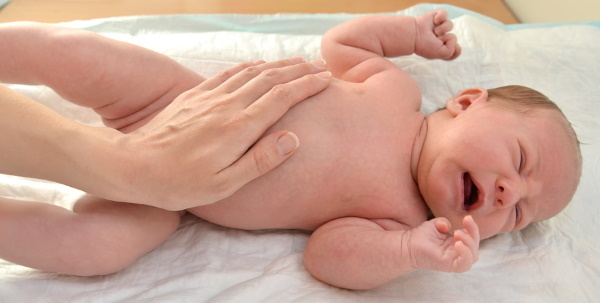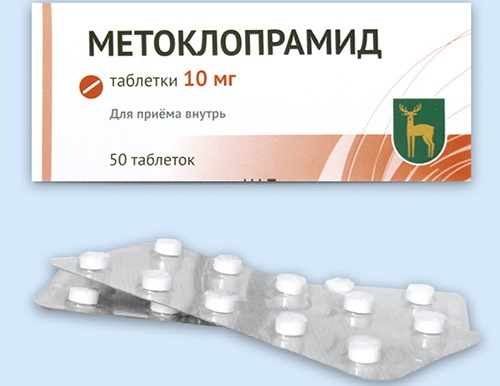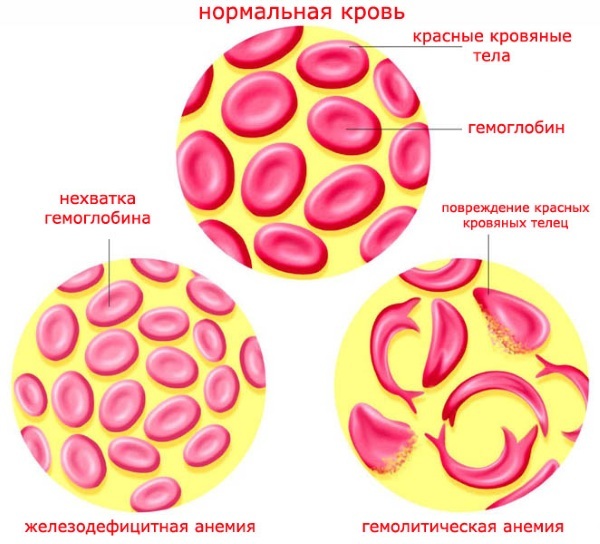Ledd's syndrome is a congenital bowel rotation abnormality, formed in newborns due to compression of the duodenum by the cecum or by strands coming from it with a volvulus of the midgut.
The disease develops in the womb for a period of 10-12 weeks and is a volvulus of the midgut around the superior mesenteric artery and fixation of the cecum. The pathogenesis of the disease lies in the incorrect position of the peritoneal organs.
Record content:
- 1 Views
-
2 Stages and degrees
- 2.1 The first
- 2.2 The second
- 2.3 Third
- 3 Symptoms and Signs
- 4 Causes
- 5 Diagnostics
-
6 Treatment methods
- 6.1 Drug therapy
- 6.2 ethnoscience
- 6.3 Diet food
- 7 Possible consequences and complications
- 8 Video about Ledd's syndrome
Views
In medicine, Ledd's syndrome in newborns is divided into several types:
-
By origin - acquired and congenital. Congenital is diagnosed in babies with an absence of anus, ailments that affect the small and large intestine. In all other cases, the disease is acquired.

- By the mechanism of appearance - dynamic and mechanical.
- According to the clinical course: chronic, acute, complete and partial.
- By squeezing blood vessels, which provide nutrition to the intestine: obstructive, when a mechanical obstacle is observed, strangulation - a combined load is applied to the vessels of the splash.
Stages and degrees
Experts distinguish 3 stages of the disease, each of which has increasing symptoms.
The first
Its development can be determined by severe pain and seething. Initially, discomfort appears at the site of organ damage and gradually spreads throughout the abdomen. Symptoms can develop quite quickly. This condition persists for a day.
The second
Intoxication of the body is observed - vomiting, flatulence and difficulty with defecation are additionally added to the pain in the abdomen. Some babies have blood in their stool. The patient becomes covered with a cold sweat, the general condition worsens every hour, the abdomen swells asymmetrically. Similar symptoms persist for 36 hours.
Third
At this stage, the patient has peritonitis, which requires urgent hospitalization and urgent surgical intervention, since the baby is diagnosed with intestinal obstruction.

The slightest delay can threaten the patient with death.
Symptoms and Signs
Ledd's syndrome in newborns is not always manifested by persistent symptoms. In addition to the gag reflex and regurgitation of food with the presence of bile, babies also experience severe pain in the abdomen. In some infants, relapses occur, leading to acute intestinal obstruction with serious worsening, even collapsing.
General symptoms are manifested in the form:
- flatulence;
- delayed bowel movements;
- vomit;
- sinking of the abdomen in its lower part;
- bloating of the epigastric region;
- paroxysmal pain in the abdomen;

- palpation does not allow obtaining accurate data on the condition of a small patient.
Causes
Ledd's syndrome in newborns can form for several reasons:
- improper placement of organs inside the abdominal cavity;
- the cecum is not fixed;
- the sigmoid colon has a pathological structure;
- nodes appearing from twisting of the intestinal loops;
- congenital malformation of the peritoneum;
- pinched hernia;
- volvulus affecting one of the parts of the intestine;
- narrowing of the lumen in the intestine, triggered by the development of vascular disease or endometriosis.
Doctors often note that the cause of Ledd's syndrome can be triggered by the presence of a neoplasm that blocks the gap between the intestinal loops.
Also, the cause of the violation can be traumatic surgical interventions performed on organs. abdominal cavity, various abdominal injuries, inflammatory processes of the peritoneal organs, diverticular ailments intestines.
Diagnostics
If the first symptoms of volvulus appear, then first of all, an ambulance team is urgently called. The examination is carried out quickly in a hospital surgical department.
First of all, x-rays of the abdominal organs are performed.

Initially, a survey photograph is taken, followed by the introduction of a contrast agent into the body. This technique makes it possible to assess the stretching of the duodenum and the location of malrotation. The study is carried out in the X-ray room, which is most often located near the surgery department.
Additionally, the surgeon can carry out other research methods to assess the condition of the baby:
- A quick physical examination. With its help, the tension of the abdominal muscles is assessed, deep palpation is performed.
- Finger examination of the rectum. This technique is mandatory and as informative as possible. Assesses the condition of the walls, and separates the bloat from other ailments.
- Collecting data about the child from the parents. It is important to establish the exact time of manifestation of the first symptoms, how pronounced the symptoms are, and whether trigger factors are observed.
- Stool examination. To determine if there is blood in it, in acute conditions, an enema is prescribed and its contents are assessed.
- Ultrasound. This is the most informative, safe and affordable study to assess the condition of the abdominal organs. The average cost varies between 300-500 rubles.
- Irrigography. This is an X-ray with a barium contrast agent, which is injected into the rectum in the form of a solution, due to which it is possible to see the intestines on an X-ray. A similar method allows you to find out if the patient has pathologies, neoplasms in the intestine. The cost varies between 500-800 rubles.
Also, the surgeon recommends urgent laboratory tests:
-
Clinical blood test. Helps determine the number of red blood cells in plasma.

For Ledd's syndrome, a blood test is recommended. - Blood biochemistry. Allows you to adequately assess the state of internal organs.
- Hemostasiogram. Determines the level of blood clotting.
Treatment methods
Ledd's syndrome in newborns is treated with surgery.
Before the operation, preparatory measures are carried out, including:
- install a nasogastric tube;
- introduce drugs from the group of broad-spectrum antibiotics (the patient is previously tested for an antibiotic, since most of them cause an allergic reaction);
- install a system to help facilitate access to the vein.
The operation takes place in several stages:
- The surgeon removes volvulus and intestinal obstruction.
- The right and left intestines are placed in the correct places for them.
- The bowel loops are fixed.
- An appendectomy is performed.

After surgery, a small patient is connected to a ventilator and medications are prescribed to improve their health.
Drug therapy
Patients are prescribed drugs to improve the contractions of the intestinal musculature, due to which it is possible to improve the movement of food through the digestive organs. They also prescribe antibiotics, vitamin premix, and heart support.
The following medications are more often prescribed:
-
Metoclopramide. It is a blocker of serotonin and dopamine receptors, which has an antiemetic effect, normalizes the functioning of the digestive system, increases the tone and activity of the gastrointestinal tract, and soothes hiccups. Helps in the treatment of ulcers, as it has healing properties. The medicine is produced in tablet form and in the form of a solution for injection. Tablets are taken 1 pill three times a day, injections are administered intramuscularly or intravenously 3 times a day. The course is determined individually. The drug is prescribed for ulcers, vomiting, intestinal obstruction, accelerated bowel movements. The medicine cannot be prescribed to babies who have a special sensitivity to the composition of the drug. Failure to follow the recommendations can provoke the development of such symptoms: drowsiness, dry mouth, tremors of the limbs, tinnitus. The average price of the drug is 100 rubles.

- Trimedat Valenta. This drug is prescribed to normalize the peristalsis of the digestive system. The main components have a positive effect on opioid receptors. It is used to eliminate pain provoked by dysfunctions of the digestive system and bile excretion pathways. Prescribed as preparatory measures for x-rays. The oral dose is 300 mg and the rectal dose is 200 mg. The dosage for intravenous or intramuscular administration is 50 mg. The duration of therapy depends on the indications and recommendations of a specialist.
-
Gemodez-N. This is a detoxification medication produced in the form of an injection solution. Its active components bind toxic components, cleanses the blood and helps to remove it from the body. Also, the remedy significantly increases blood flow and urine output. The solution is injected into a vein at 80 drops per minute, the dose is calculated - 2.5 ml per 1 kg of body weight. Prescribed for acute forms of intestinal intoxication, peritonitis in the period after surgery, liver failure, sepsis, intrauterine infections. You can not prescribe medicine for problems with the heart and blood vessels. In rare cases, during therapy, the following reactions may occur: allergy, shortness of breath, arterial hypotension. One bottle of the drug will cost 350 rubles on average.

- Dinaton. The medicine is produced in the form of an injection solution that can be injected into the body intravenously or intramuscularly. The therapeutic effect is based on an increase in platelet aggregation and an increase in capillary resistance, has an antidiuretic effect, normalizes peristalsis, endogenous vasomotorism. Reduces signs of local hypoxia, normalizes the motor-evacuation functions of the digestive system. Prescribe a medication for intestinal obstruction, vasculitis, hemorrhagic syndrome, anemia. The dose and course of treatment are selected individually, depending on the diagnosis and the complexity of its course. You cannot prescribe a medicine for acute thrombosis, kidney pathologies, arterial hypertension, asthma, acute thrombosis. In rare cases, when the doctor's instructions were not followed, such undesirable symptoms may be observed: decreased urine output, discomfort in the peritoneum, nausea, increased pressure. The average cost of an injection solution varies within 1,500 rubles.
ethnoscience
Traditional medicine recipes help prevent the development of complications and prevent relapses of the disease.

Popular and effective recipes are:
| Sea buckthorn berries | Berry juice has anti-inflammatory effects and oil is the best natural laxative. To prepare the juice, you will need to take 1 kg of fresh berries, rinse and grind them with a blender, squeeze the juice using a fine mesh sieve or cheesecloth. The oil is prepared as follows: grind 1 kg of berries, but only with a wooden spoon, leave to settle for a day, after which oil is formed on the surface of the berry mass, which should be carefully collected in a separate capacity. | Take ½ tbsp. in the morning half an hour before meals. Take oil in 1 tbsp. l 3 times a day before meals. |
| Dried fruits | With their help, it is possible to activate intestinal peristalsis, they have a mild laxative effect. To prepare a useful composition, you will need to take 200 g of dried apricots, figs, raisins, and prunes. | Take the resulting mixture in 1 tbsp. l. in the morning on an empty stomach. |
| Plum broth | It has a mild laxative effect. For cooking, you need to take 0.5 kg of plums, remove the bone, pour cold water and let stand for a quarter of an hour. Then put on low heat to simmer for an hour and a half. | Take the broth chilled after each meal for ½ tbsp. |
Diet food
In the postoperative period, a small patient is recommended to follow several dietary rules:
- The baby in the first year of life after the operation is recommended only breast milk, if with it difficulties arise, the newborn should only be fed with a highly adapted hypoallergenic mixture.

- If complementary foods have already been introduced to the child, then the food should be gentle - it is cooked only for a couple. Recommended soups cooked in vegetable broths, cereals, pre-grated, meat puree, but only from lean meats.
- Do not forget about sufficient fluid intake for the newborn and nursing mother.
- The baby should be fed at least 5 times a day, but the portions should be small.
- It is impossible in the postoperative period to introduce semi-finished products, fried and smoked foods into the baby's diet.
The doctor must necessarily tell about the peculiarities of the diet, since it may differ depending on the diagnosis and the complexity of the course of the disease.
Correction of nutrition is also considered a preventive measure that helps prevent the recurrence of the disease.
Possible consequences and complications
Ledd's syndrome, which is quite rare in adults, is common in newborns and requires urgent hospitalization and an early solution to the problem.
Otherwise, inaction of adults can threaten the baby:
- Severe intoxication of the whole organism. The work of the intestines is disrupted, due to which toxic substances enter the body through the blood, all organs suffer.
- Sepsis is blood poisoning.
- Formation of an abscess.
- Peritonitis. This is a severe inflammatory process, often leading to the death of the patient. Such a condition poisons the entire body with toxic substances and leads to disruption of the functions of all systems and organs. Such a violation requires urgent hospitalization, otherwise the patient will be fatal.

- Necrosis and subsequent perforation of the anastomoses. In this case, feces from the intestine through the perforation are released into the peritoneal cavity, intestinal cells die off, general health deteriorates sharply, pressure drops, dryness in the oral cavity.
- Chronic constipation. Neoplasms or narrowing of the intestinal lumen make it difficult to defecate.
- Accession of a secondary infection.
Most of the complications can lead to the death of a small patient. Ledd's syndrome is a serious illness that requires urgent hospitalization and surgery.
A newborn will not be able to talk about his illness on his own, so parents need take a closer look at your child, quickly recognize the symptoms and immediately seek qualified help. Otherwise, complications will not keep you waiting, and most of them are fatal.
Video about Ledd's syndrome
Saving a child with Ledd's syndrome:



